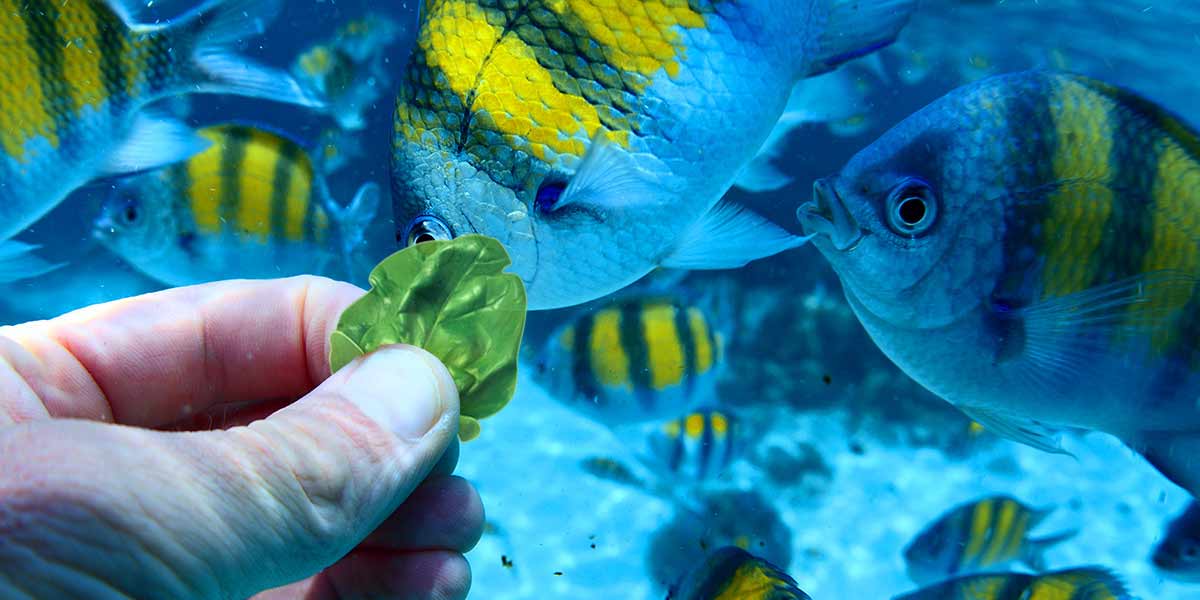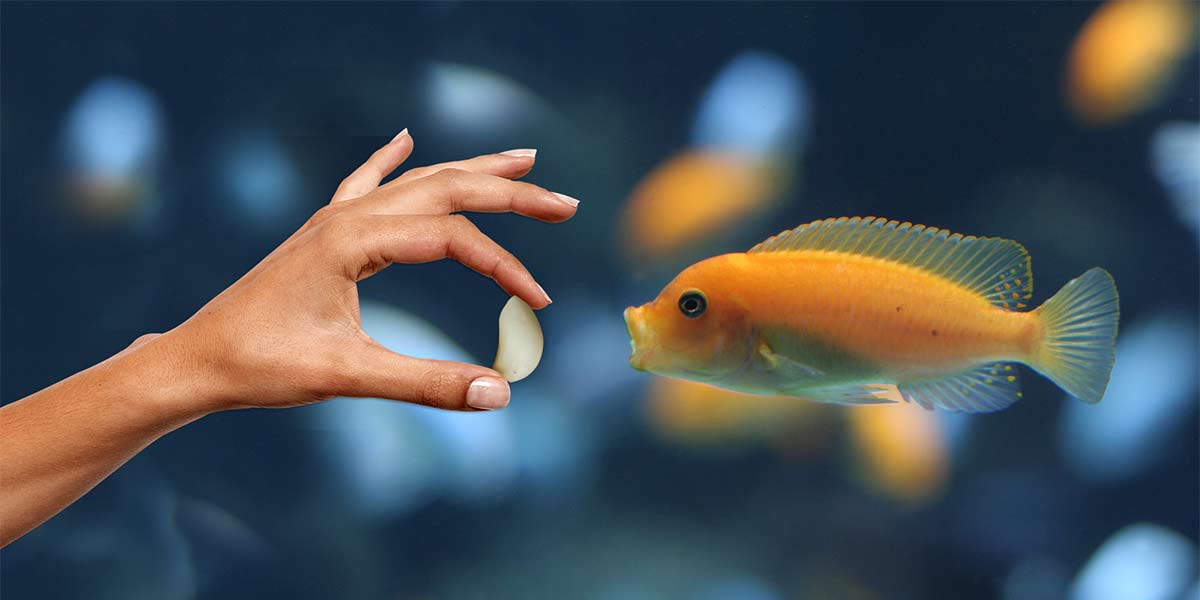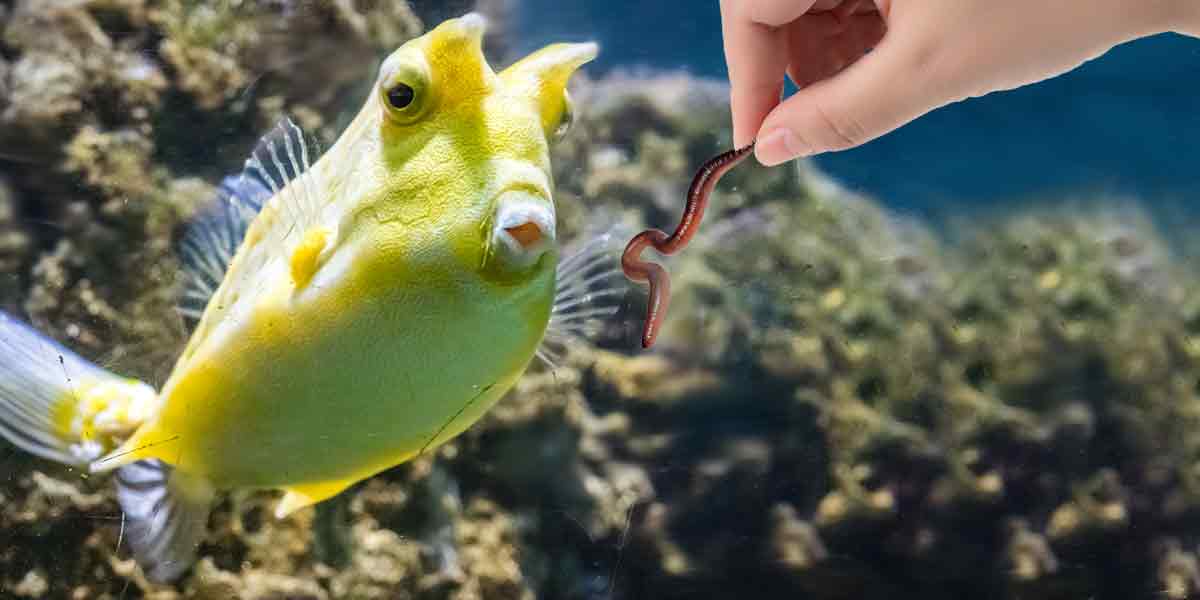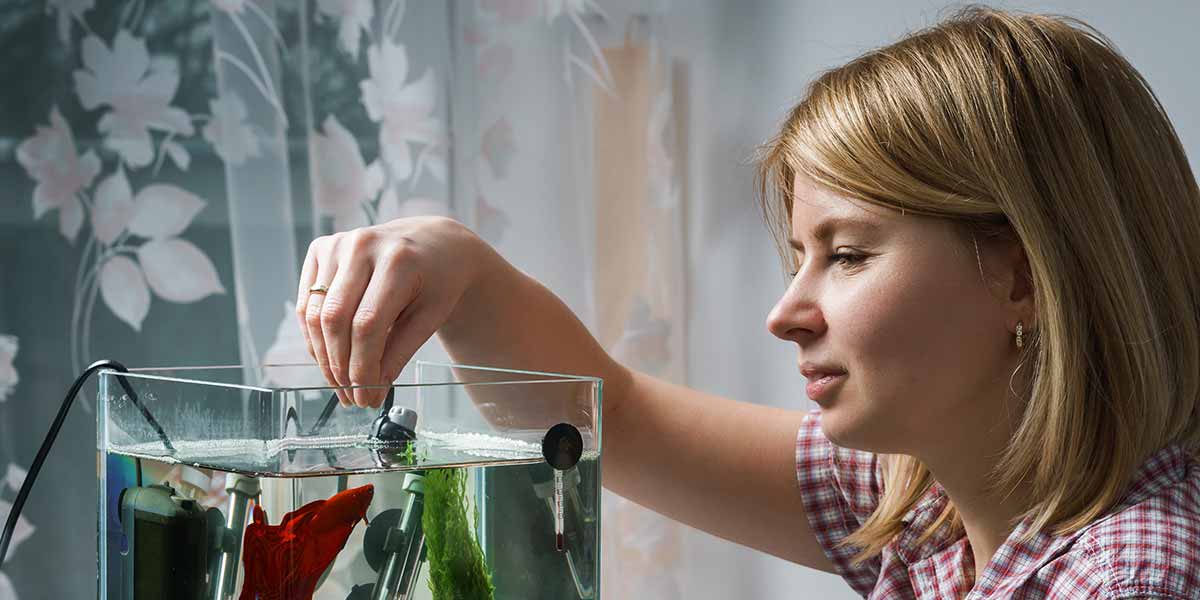The short answer is yes, you can feed your fish spinach. However, there are some essential factors to consider. In this blog post, we’ll look at the nutrition of spinach, and we’ll also discuss the pros and cons of feeding your fish spinach.
As an affiliate, we earn from qualifying purchases. We get commissions for purchases made through links in this website’s posts from Amazon and other third parties.
Keep reading to learn more!
Did you know that fish can be fed leafy greens?
Did you know that feeding leafy greens to fish is a great way to provide them with a balanced diet?
Can I feed my fish spinach? The answer is: Yes, you can! Fish can actually eat spinach and other leafy greens like kale, romaine lettuce, and Swiss chard.
Spinach is an excellent source of protein and vitamins A and C and is also high in iron and calcium. Feeding fish spinach is a great way to ensure they get the nutrients they need to stay healthy and active.
Before feeding fish spinach, it is essential to make sure you wash thoroughly the leaves. Spinach can contain many contaminants, including bacteria, dirt, and chemicals. It is also important to make sure you cut the spinach leaves into small pieces before adding them to the water. This will help the fish to eat the leaves and digest them. You can give your fish a variety of other foods, like insects, worms, and other vegetables, but it is important to provide them with a balanced diet.
When feeding fish spinach, it is crucial to monitor their diet to ensure they get enough of the necessary nutrients. It is also essential to provide them with plenty of clean water and to change their water on a regular basis. This will help them stay healthy and active.
Feeding fish spinach can be a fun and rewarding experience, and it’s a great way to make sure your fish are getting all the nutrients they need for a healthy life.
Can I feed all kinds of fish spinach?
As with many things in life, not every leafy green is suitable for every fish. The leafy green that you choose to feed will depend on the type of fish that you have, their age, and their health.
Here is a breakdown of the different types of leafy greens that you can feed your pet fish:
- Spinach: Spinach is a nutritional powerhouse, loaded with antioxidants, vitamins, and minerals. You can add spinach to your pet’s diet a few times a week in small quantities.
- Romaine lettuce: Romaine lettuce is a nutritional powerhouse, loaded with antioxidants, vitamins, and minerals. You can add romaine lettuce to your pet’s diet a few times a week in small quantities.
- Kale: Kale is a nutritional powerhouse, loaded with antioxidants, vitamins, and minerals. You can add kale to your pet’s diet a few times a week in small quantities.
- Turnip greens: Turnip greens are a nutritional powerhouse, loaded with antioxidants, vitamins, and minerals. You can add turnip greens to your pet’s diet a few times a week in small quantities.
Discover the benefits of feeding your fish spinach, a nutritious leafy green
Spinach is a nutritious leafy green that is great for your fish. It is loaded with vitamins, minerals, and antioxidants, which can provide your fish with plenty of health benefits. It’s a good idea to feed your fish spinach on a regular basis so that they can receive all of its health benefits.
Spinach is loaded with minerals, vitamins, and antioxidants that are great for your fish. It’s loaded with vitamin C, vitamin E, vitamin K, potassium, calcium, and iron.
It also contains beta-carotene, which is vital for the health of their eyes. Spinach also contains lutein and zeaxanthin, which are powerful antioxidants that help protect your eyes.
In addition, spinach is a great source of fiber. Fiber can help reduce the risk of many chronic diseases, including diabetes and heart disease.
It can also help your fish maintain a healthy weight. Spinach is loaded with antioxidants that can fight free radicals, preventing them from damaging your fish’s cells. Free radicals can cause your fish to develop diseases like cancer, so it’s important to protect from free radicals by eating antioxidants.
Learn about the potential risks of feeding your fish too much spinach
Feeding your fish too much spinach can be risky for their health. Spinach, which is rich in iron, can be beneficial for fish in moderation, but too much of it can lead to health complications.
Excessive consumption of spinach can cause a buildup of oxalic acid, which can be toxic to fish. That can lead to decreased appetite and even death in extreme cases. High levels of iron in the water can also lead to a decrease in oxygen levels. This can be especially dangerous for freshwater fish.
It is important to take caution when adding spinach to your fish’s diet. Only feed your fish small amounts of spinach on occasion. Make sure to cook the spinach before adding it to the water, as this will help to reduce the oxalic acid levels. If you notice any signs of distress in your fish, such as lethargy or decreased appetite, immediately discontinue the use of spinach and consider seeking out advice from a veterinarian.
Spinach can be a beneficial addition to your fish’s diet, as long as you use it with caution. Make sure to feed your fish only small amounts of spinach on occasion and to cook it before adding it to the water. Be sure to monitor your fish carefully and watch for any signs of distress. With the proper precautions, you can provide your fish with the nutritional benefits of spinach without risking their health.
Will spinach make my fish sick?
Your fish will not die if you feed it spinach. Plants and meats aren’t usually mutually exclusive, so you won’t kill your fish by feeding it spinach.
Some fish may dislike the smell of spinach, though, so your fish may not eat it all up.
Spinach is a type of leafy green vegetable, popular for salads and stir-fries. It’s low in calories, but high in nutrients like vitamin A, vitamin C, vitamin B6, folate, vitamin K, potassium, and manganese.
Spinach can be safely fed to all kinds of fish. Some types of fish, however, are more sensitive to changes in diet.
Is spinach safe to feed your fish?
Spinach is safe to feed your fish. However, you should only feed your fish cooked spinach. Fresh spinach leaves contain nutrients such as potassium, iron, and calcium, which are good for the health of your fish. However, raw spinach contains high levels of oxalate, which is toxic to fish and can cause kidney damage.
Feeding your fish cooked spinach is the safest way to provide them with the nutrients they need. You can cook spinach by boiling or steaming it, but make sure you remove as much moisture as possible.
Watch the next video to find out how spinach helps your fish:
You can also freeze spinach, which locks in all the nutrients. Then thaw it out when you are ready to feed it to your fish.
Potential downsides of feeding aquarium fish spinach:
Feeding aquarium fish spinach can be a nutritious addition to their diet, but it is important to be aware of the potential downsides.
Spinach is a high-nitrate food. When fed in large amounts over a long period of time, it can cause nitrate levels to become dangerously high in the tank. This can lead to health issues for the fish. In addition, spinach does not contain all the vitamins and minerals that a fish needs for a healthy diet.
A fish kept on a spinach-only diet can become deficient in important nutrients like calcium and Vitamins A, D, and E, leading to health problems.
Overfeeding can also be an issue since a fish can fill up on spinach and not eat other, more nutrient-dense foods.
Finally, spinach can be contaminated with heavy metals and other pollutants. So it is important to thoroughly wash and clean the spinach before feeding it to the fish.
Preparing spinach for aquarium fish
Preparing spinach for aquarium fish is an important part of providing them with a healthy and balanced diet. In order to ensure that your fish are receiving the nutrients they need from their food, it is essential to prepare the spinach properly.
The first step to preparing the spinach is to wash it thoroughly to remove any dirt or debris. After washing, the spinach should be cut into small pieces that are bite-sized for your fish. Once the spinach is cut, it should be soaked in water to help release the beneficial vitamins and minerals. Finally, the spinach should be cooked until tender and then cooled before being fed to the fish.
Watch the next video to find an easy way to prepare spinach to feed your fish:
When feeding spinach to aquarium fish, it is important not to overcook the spinach as this can reduce its nutritional value. Additionally, it is important to remove any uneaten spinach from the aquarium to prevent any water contamination. Following these instructions will help to ensure that your aquarium fish are receiving the nutrition they need from their food.
Tips for properly introducing leafy greens into your fish’s diet
Spinach, kale, and other leafy greens are excellent sources of vitamins, minerals, and phytonutrients. Unfortunately, not all fish are fond of leafy greens. In fact, some species can develop an aversion to leafy greens. If your fish is a picky eater, it’s important to introduce leafy greens into its diet gradually. Follow these tips to successfully incorporate leafy greens into your fish’s diet.
Choose the right greens: Not all leafy greens are suitable for fish. Some varieties contain high levels of oxalates, which can harm or kill fish. In general, leafy greens that are grown organically are lower in oxalates, making them a better choice for your fish.
Start with small amounts: Give your fish a very small amount of leafy greens the first time. Fish often like leafy greens when cooked, but they may not like the texture of raw greens. Give your fish a very small amount of spinach and kale to see how your fish likes it. If your pet doesn’t like raw greens, you can cook them in your fish’s food.
Gradually increase the amount: Once you have your pet’s first taste of leafy greens, continue to add a small amount to its diet each time it eats. As your pet becomes more comfortable with leafy greens, increase the amount. Eventually, your pet should be eating leafy greens regularly.
Serving spinach to aquarium fish:
Serving spinach to aquarium fish can be beneficial for their health, as it contains various vitamins and minerals that promote growth, immunity, and overall lifespan. Spinach should generally be fed to aquarium fish no more than once a week and in small portions. This is because spinach contains oxalates, which can bind to certain minerals in the fish’s body, reducing the number of available minerals for absorption.
Overfeeding spinach can cause digestive issues such as constipation and bloat, so it is important to feed fish sparingly. Additionally, we strongly suggest you cook or blanch the spinach before feeding, as raw spinach can contain compounds that are toxic to fish.
When feeding spinach, it is important to choose fresh, organic spinach if possible. In that way, it is less likely to contain contaminants and other harmful compounds. Frozen or canned spinach can also be used but should be thoroughly rinsed before feeding.
Additionally, spinach should be washed to remove any dirt or other foreign substances. After washing, it should be cut into small pieces or coarsely chopped to ensure that the fish can eat it easily. It is also important to ensure that the spinach is completely dried before feeding, as damp spinach can quickly spoil in the tank and cause bacterial contamination.
Monitor the fish’s reaction to the spinach:
Finally, it is important to monitor the fish’s reaction to the spinach. If there is any sign of digestive upset or other adverse reactions, it is recommended to reduce the amount of spinach being fed or to discontinue feeding it altogether.
While spinach can be a beneficial addition to the aquarium, it should always be fed in moderation and monitored closely. By following these guidelines, aquarium owners can ensure that their fish can safely and healthily enjoy the benefits of eating spinach.
Conclusion
In conclusion, it is safe to feed your aquarium fish spinach, but only in moderation. Spinach is a great source of vitamins and minerals. However, it can also cause digestive issues in some fish, so it’s important to only offer small amounts. You should boil or cook the spinach before feeding your fish. The reason is that raw spinach can be difficult for them to digest.
With these precautions in mind, feeding your aquarium fish spinach can be a beneficial part of their diet.






